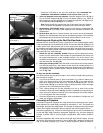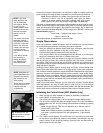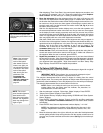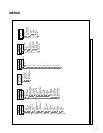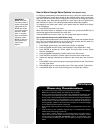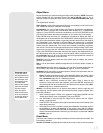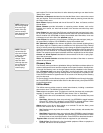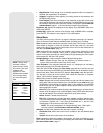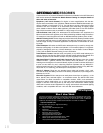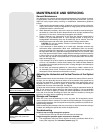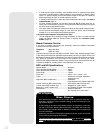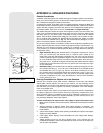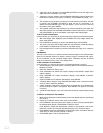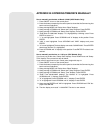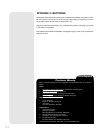
• Magnification: Scroll through a list of available eyepieces. When an eyepiece is
selected, the magnification is calculated.
• Suggest: Suggests the best eyepiece for viewing, based on the telescope and
the object being viewed.
• Focal length: Enter the focal length of you telescope so that the control panel
can make the Eyepiece Calc menu calculations. Use UP/DOWN to scroll through
the numbers and press Enter after each number is displayed. See
NG AND NGC
SPECIFICATIONS, page 21, to find out the focal length of your telescope.
Brightness Adj:
Adjusts the brightness of the display using UP/DOWN. When com-
plete, press ENTER.
Contrast Adj:
Adjusts the contrast of the display using UP/DOWN. When complete,
press ENTER. This feature is only required in very cold weather.
Setup
Menu
The Setup menu’s primary function is to align the telescope (see page 12
).
However,
there are numerous other features available within the Setup menu, including:
Date changes the date used by the computer control panel. This function is useful to
check events in the past or future. For example, set the Date menu for a day three
months in the future.Then check the "Select Item: Event" menu for the Sunset time on
that date. See
EVENT MENU, page 16.
Time changes the time entered into the computer control panel. Setting the correct
time is critical for the computer control panel to properly calculate locations and
events.Time may be set to 24-hour mode (military time) by selecting the "blank" option
which follows the "AM" and "PM" options.
Daylight Saving is used to enable or disable Daylight Savings time.
NOTE: Daylight Savings Time may be referred to by different names in
various areas of the world. Check local time to verify.
Train Encoders: If the telescope becomes erratic, try changing the 9 volt battery
before performing the Train Encoders procedure.
“Move the Tube UP/DN” displays first. Very slowly move the tube up all the way and
then down all the way. Press ENTER (do not hold ENTER).You will be asked to do this
several times. Next, “Move the Tube E/W” displays. Very slowly rotate the tube 360°.
You also will be asked to do this several times. When the procedure is complete,
“Setup: Train Encoders” displays once again.
Site provides access to several options including:
• Select: Displays the currently selected observing site and and also allows you to
select other sites you have entered into a user-defined list (see
ADD below). Use
UP/DOWN to scroll through all available sites in this database. Press ENTER
when the site you wish to select displays. Use this option when you move to a dif-
ferent geographic location.
• Add: Allows you to add new observing sites to the database (up to six sites may be
stored). Scroll through the list of Countries/States. Press ENTER when the site you
wish to add displays. Then choose the desired city in the same manner.
• Delete: Deletes a stored site from the list.
• Edit: Edits a selected site, including: the name, latitude, longitude, and time zone.
Time Zone refers to the Greenwich Mean Time (GMT) time zone shift. Users West
of Greenwich, England use "-" hours, East of Greenwich use "+" hours. For the
United States, look up the time zone shift in Table 1.
NOTE: This menu compensates for Daylight Savings time, if that option
has been enabled. See
SETUP MENU: DAYLIGHT SAVING
, above.
Statistics provides basic statistical data about your system, including:
• Characters Free: Shows how much room is available in the user-defined object
memory.
• Version: Shows the current version of the software.
Reset completely resets the computer control panel. You need to initialize the com-
puter control panel after a Reset before proceeding with observations. See
INITIALIZ-
ING THE CONTROL PANEL, page 11.
17
Time Zone Shift
Atlantic -4 Hours
Eastern -5 Hours
Central -6 Hours
Mountain -7 Hours
Pacific -8 Hours
Hawaii -10 Hours
Table 1: Time Zone Shift.
NOTE: Training of the
encoders is factory
preset and only needs
to be done if you have
problems with
alignment or if the
displacement numbers
do not change when
you move the optical
tube.



